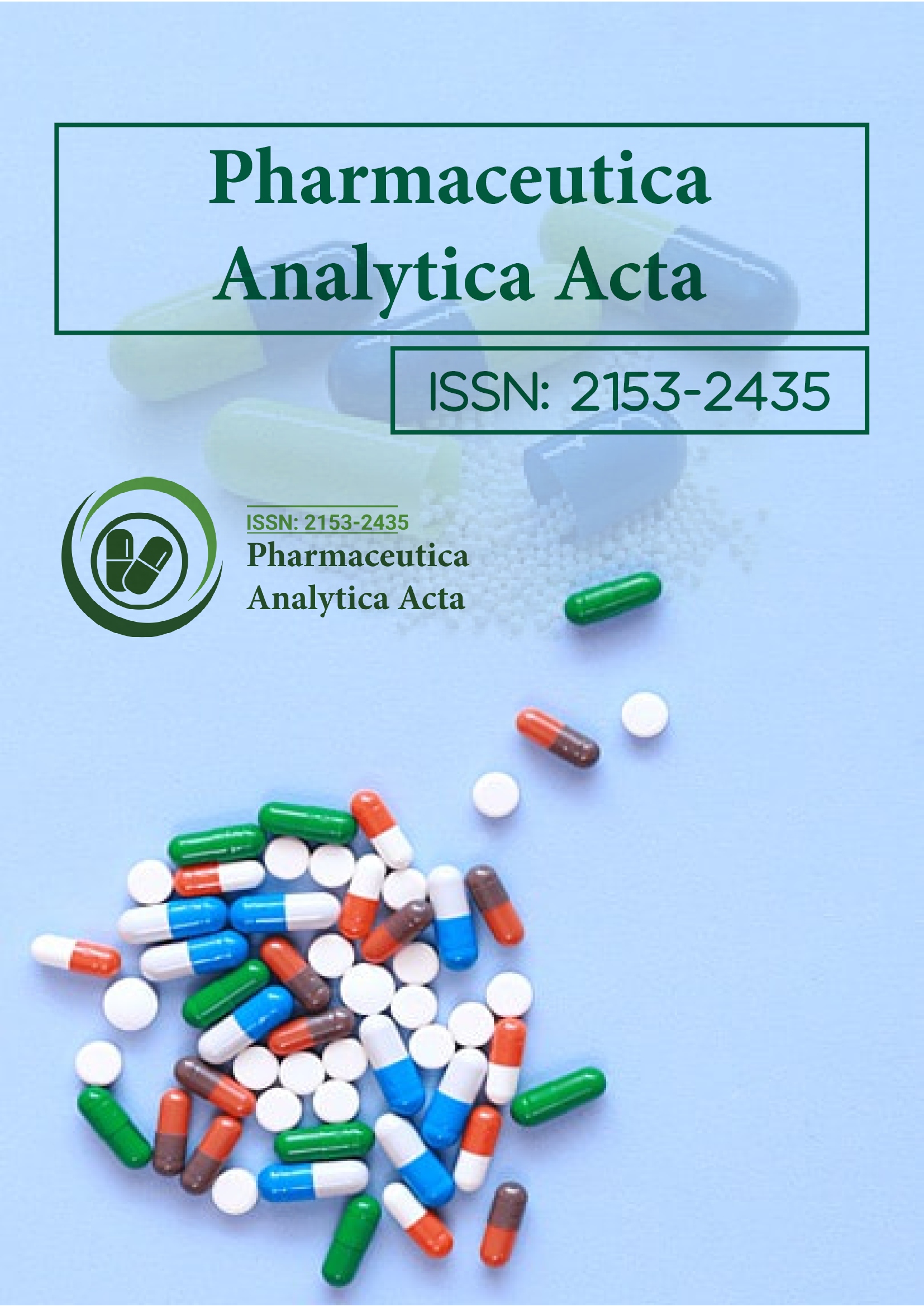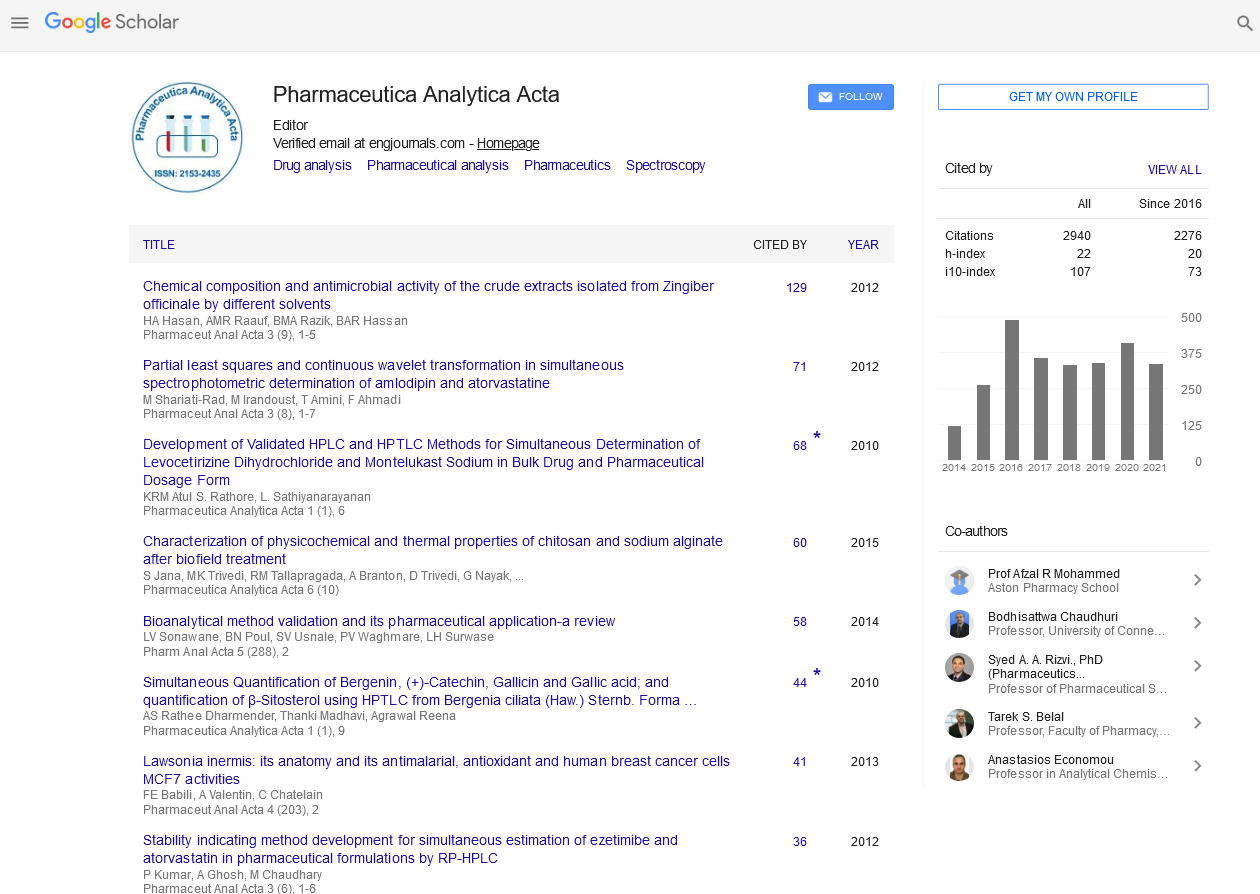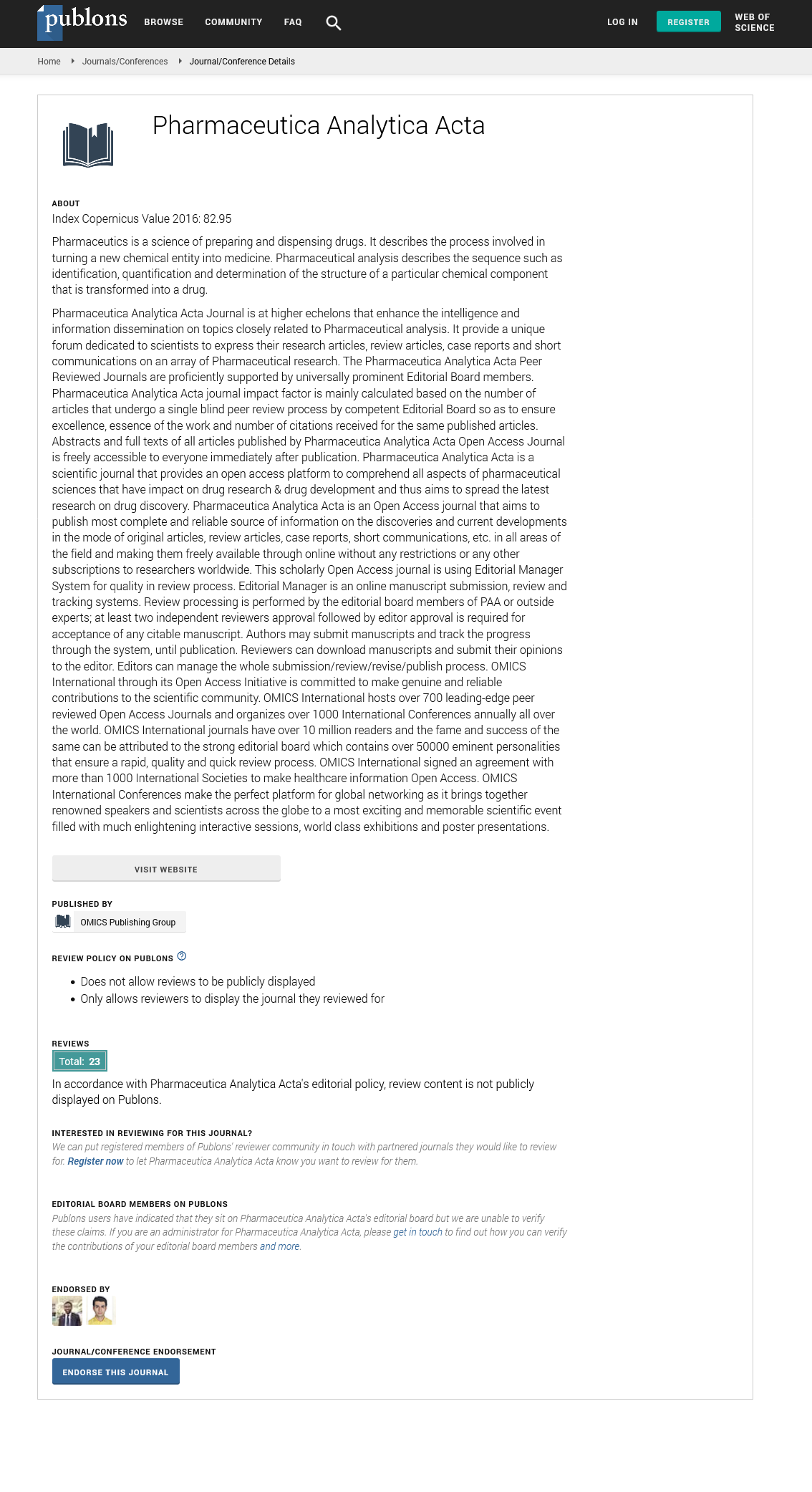Indexed In
- Open J Gate
- Genamics JournalSeek
- Academic Keys
- JournalTOCs
- The Global Impact Factor (GIF)
- China National Knowledge Infrastructure (CNKI)
- Ulrich's Periodicals Directory
- RefSeek
- Hamdard University
- EBSCO A-Z
- OCLC- WorldCat
- Publons
- Geneva Foundation for Medical Education and Research
- Euro Pub
- Google Scholar
Useful Links
Share This Page
Journal Flyer

Open Access Journals
- Agri and Aquaculture
- Biochemistry
- Bioinformatics & Systems Biology
- Business & Management
- Chemistry
- Clinical Sciences
- Engineering
- Food & Nutrition
- General Science
- Genetics & Molecular Biology
- Immunology & Microbiology
- Medical Sciences
- Neuroscience & Psychology
- Nursing & Health Care
- Pharmaceutical Sciences
Commentary Article - (2025) Volume 16, Issue 3
Analytical Validation in Pharmaceutical Product Evaluation
Elena Rossi*Received: 30-Aug-2025, Manuscript No. PAA-25-30225; Editor assigned: 01-Sep-2025, Pre QC No. PAA-25-30225; Reviewed: 16-Sep-2025, QC No. PAA-25-30225; Revised: 22-Sep-2025, Manuscript No. PAA-25-30225; Published: 30-Sep-2025, DOI: 10.35248/2153-2435.25.16.823
Description
A recognized platform for scientific communication in the area of drug analysis emphasizes the importance of method validation in ensuring dependable data. Through the studies featured within this outlet, validation concepts are applied across a broad range of techniques, including chromatographic, spectrophotometric and electrochemical methods. Every method requires proof that the obtained results are precise, consistent and reproducible. This process verifies that the test performs as intended and that the measured values genuinely reflect the characteristic being investigated. Contributors often provide case studies demonstrating how different techniques perform across various instruments or laboratories, confirming that precision can be maintained under diverse conditions. The consistency of test outcomes remains a vital aspect during the creation of new medicinal compounds, ensuring uniformity between production batches and among quality control facilities. Validation not only verifies immediate accuracy but also evaluates the method’s stability over time, its behaviour under slightly changed experimental conditions and its reliability when carried out by different individuals. Such verification ensures that results remain trustworthy over prolonged use within production and compliance environments.
Another recurring area of discussion involves the calibration of instruments and the standardization of reagents. Many articles explain how reference materials are chosen, system suitability maintained and error assessment performed. Calibration establishes a defined relationship between instrument response and known analytic quantities, enabling confident interpretation of results. Standardization of reagents guarantees that reactions occur with predictable accuracy and purity, minimizing uncertainty in quantitative work. This level of transparency enhances scientific reliability and supports reproducibility. Validation procedures also cover sample preparation, data management and interpretation of findings. Even slight procedural variations can affect outcomes; hence, robustness testing and recovery studies are key components. By assessing how minor changes in parameters such as pH, temperature, solvent ratios, or extraction times influence data, professionals can determine how sensitive their methods are to external factors. This ensures that the technique remains dependable, even when conditions deviate slightly from optimal settings.
Sample preparation holds particular significance in achieving dependable outcomes. Steps such as extraction, filtration and dilution can introduce variability if not carefully standardized. Investigators frequently compare manual and automated approaches to measure differences in precision and efficiency. The application of internal standards, blank corrections and recovery checks further strengthens confidence in the results. Collectively, the studies demonstrate that meticulous attention to preparatory steps minimizes systematic error and improves consistency across laboratories. Another major focus involves handling and processing of data. Modern instrumentation generates extensive datasets and processes like integration, baseline correction and signal smoothing can influence the final interpretation. Validating these computational procedures ensures that results are objective, free from bias and properly documented. Detailed recording of software settings, calibration curves and statistical treatments forms a crucial component of complete validation reports.
Statistical analysis of data also plays an essential role in this process. Methods such as regression analysis, determination of confidence intervals and estimation of detection and quantification limits are used to measure performance. Replicated evaluations under varying conditions help confirm reliability, with variation expressed through numerical indicators like standard deviation or relative standard deviation. This numerical expression of uncertainty allows meaningful comparison between laboratories. Many studies emphasize the connection between method validation and compliance with international standards. Before a drug product can reach the market, its testing procedures must be proven suitable for confirming identity, strength, purity and stability. The validation guidelines described align with global quality expectations, ensuring that submitted data meet rigorous evaluation standards. Thus, validation supports the wider objective of guaranteeing that medicinal products available to the public are safe, effective and consistent in quality.
Operational and environmental factors also affect analytical performance. Temperature, humidity, equipment maintenance and operator proficiency must be carefully controlled. Laboratories maintain detailed procedural documentation to minimize potential sources of error. Validation exercises often include comparisons between multiple facilities, where identical samples are examined to test the transferability of methods. These collaborative evaluations enhance confidence in procedural reliability and demonstrate that techniques can be applied broadly across different manufacturing and testing environments. They provide a strong framework for building dependable experiments and setting reliable quality benchmarks for emerging analytical methods. Emphasis on technical rigor and precision strengthens the credibility of outcomes that support regulatory review, product design and production oversight. Ultimately, validation represents more than a technical formality it is a comprehensive discipline combining chemical understanding, statistical evaluation, quality management and scientific integrity.
Citation: Rossi E (2025). Analytical Validation in Pharmaceutical Product Evaluation. Pharm Anal Acta. 16:823
Copyright: © 2025 Rossi E. This is an open-access article distributed under the terms of the Creative Commons Attribution License, which permits unrestricted use, distribution and reproduction in any medium, provided the original author and source are credited


